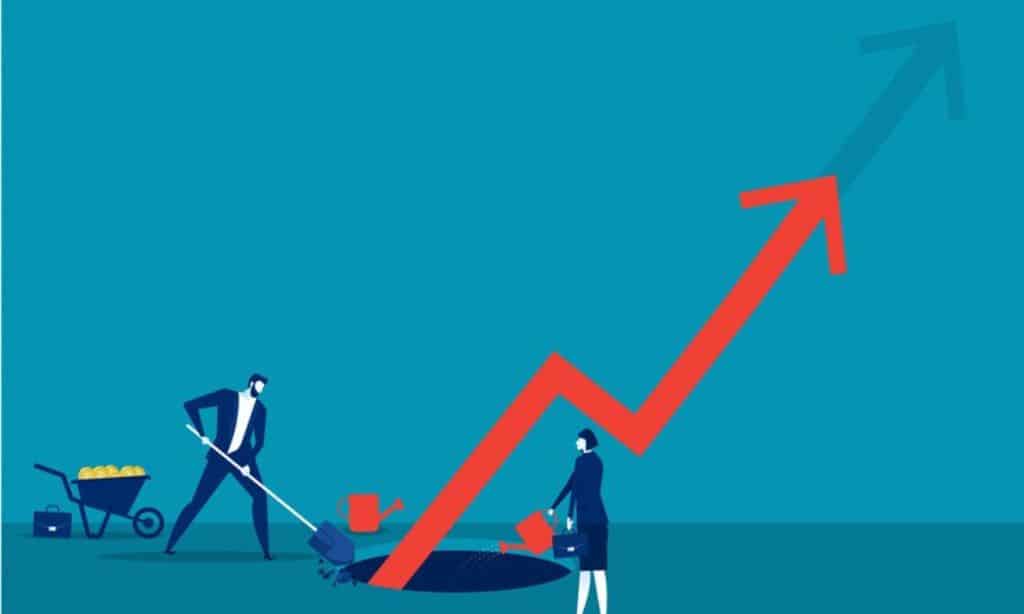In the dynamic world of investing, portfolio diversification is the cornerstone of a resilient financial strategy. While stocks and bonds are traditional mainstays, commodities provide unique benefits that can enhance your portfolio’s performance.
Commodities like gold, oil, agricultural products, and industrial metals offer diversification, inflation protection, and the potential for significant returns.
This article delves into five compelling reasons why commodities should be part of your investment portfolio.
Whether you’re a seasoned investor or a beginner, understanding the role of commodities can elevate your investment strategy and safeguard your wealth in uncertain times.
1. Portfolio Diversification
Diversification is crucial in minimizing risks and ensuring consistent returns in an investment portfolio. By spreading investments across different asset classes, you reduce the impact of losses from any single asset.
Commodities are especially valuable because they often exhibit low or negative correlations with traditional assets like stocks and bonds. For instance, when stock markets falter, commodities such as gold may perform well, providing a stabilizing effect.
Including commodities ensures your portfolio remains balanced, even during economic turbulence. Unlike equities or fixed-income securities that are influenced by corporate or government policies, commodities are driven by supply and demand dynamics in global markets.
This independence makes them an excellent counterbalance to traditional assets, safeguarding your investments in uncertain times.
How Commodities Enhance Diversification
- Low Correlation: When stock markets are volatile, commodities often remain stable or increase in value. For instance, during the 2008 financial crisis, gold prices surged as equity markets collapsed.
- Reduced Risk: Including commodities can help reduce overall portfolio risk by balancing losses in other asset classes.
Example:
| Asset Class | Correlation with Stocks |
| Gold | Negative |
| Crude Oil | Low |
| Agricultural Commodities | Low |
Real-World Scenario
During the COVID-19 pandemic, stock markets experienced significant volatility. However, gold and other commodities provided stability for investors, reinforcing the value of diversification.
2. Hedge Against Inflation
Inflation erodes the purchasing power of money, diminishing the real value of your savings and investments. For investors, protecting against inflation is essential to maintaining wealth.
Commodities, particularly tangible assets like gold, oil, and agricultural products, often increase in value during inflationary periods. This makes them a natural hedge.
Unlike fiat currencies, which can lose value when central banks print more money, commodities have intrinsic value. Their prices typically rise when inflation drives up the cost of goods and services, preserving their purchasing power.
Investing in commodities ensures that your portfolio remains resilient, even as inflation impacts traditional investments like bonds or cash.
How Commodities Protect Against Inflation
- Intrinsic Value: Commodities are physical assets with inherent value, unlike fiat currencies that can depreciate over time.
- Price Increases: As inflation rises, the prices of commodities often increase, preserving their value.
Example:
| Commodity | Average Annual Growth During Inflation |
| Gold | 10% |
| Crude Oil | 12% |
| Agricultural Goods | 8% |
Real-World Scenario
In the 1970s, during a period of high inflation, gold prices skyrocketed, providing investors with a reliable store of value amidst economic uncertainty.
3. Potential for High Returns
Commodities offer the potential for significant returns, often outperforming traditional investments during periods of supply disruptions, geopolitical events, or surges in demand.
Unlike stocks or bonds, which depend on corporate performance or interest rates, commodities are influenced by global market forces, making their price movements dynamic and often lucrative.
For example, advancements in technology or shifts in consumer behavior can lead to increased demand for specific commodities, driving their prices higher.
Similarly, natural disasters or geopolitical conflicts can disrupt supply chains, causing sharp price spikes. Investors who capitalize on these trends can achieve remarkable gains, making commodities a high-reward component of a diversified portfolio.
Key Factors Driving Returns
- Supply and Demand Dynamics: Limited supply and rising demand can drive up prices significantly. For example, increased demand for lithium due to electric vehicles has led to a surge in its value.
- Geopolitical Events: Conflicts or sanctions affecting oil-producing countries can cause sharp price increases in crude oil.
- Technological Advancements: Innovations that require specific commodities, such as rare earth metals for electronics, can lead to higher demand and returns.
Example:
| Commodity | Price Surge Event | Return (%) |
| Crude Oil | 2008 Oil Crisis | +60% |
| Lithium | EV Boom (2020-2023) | +300% |
| Gold | 2008 Financial Crisis | +25% |
4. Safe Haven During Market Volatility
Economic downturns, geopolitical tensions, and market volatility often lead to widespread uncertainty among investors. During such times, commodities like gold and silver act as safe-haven assets, preserving wealth and providing stability when traditional markets falter.
Their intrinsic value and universal appeal make them reliable options for safeguarding capital.
For centuries, gold has been regarded as a store of value during crises, holding its worth regardless of economic conditions. Similarly, other commodities like silver and oil provide tangible backing, ensuring they remain valuable even during turbulent times.
Incorporating safe-haven commodities in your portfolio protects you against sudden market shocks, offering peace of mind in uncertain times.
Why Commodities Are a Safe Haven
- Resilient Value: Commodities retain their value due to their physical nature and intrinsic worth.
- Universal Demand: Gold and silver have been used as currency and storehouses of wealth for centuries, ensuring consistent demand.
Real-World Scenario
During the 2020 pandemic-induced market crash, gold prices rose by 25%, acting as a buffer against stock market losses.
Example:
| Year | Stock Market Decline (%) | Gold Price Increase (%) |
| 2008 | -40% | +25% |
| 2020 | -20% | +24% |
5. Exposure to Global Economic Trends
Commodities are intricately tied to global economic activity, reflecting trends in industrial production, technological advancements, and geopolitical events. By investing in commodities, you gain exposure to macroeconomic shifts and emerging opportunities, enabling you to align your portfolio with global growth patterns.
For instance, as countries ramp up infrastructure spending, demand for industrial metals like copper and steel rises. Similarly, the transition to renewable energy has increased the need for lithium and rare earth metals.
Agricultural commodities respond to population growth and climate changes, making them a vital part of long-term economic trends. Including commodities in your portfolio ensures you stay ahead of global economic shifts.
How Commodities Reflect Economic Trends
- Industrial Metals: Rising infrastructure development boosts demand for metals like copper and steel.
- Energy Commodities: Increased industrial activity or geopolitical tensions can drive oil and gas prices higher.
- Agricultural Products: Population growth and climate change directly impact the supply and demand for food commodities.
Example:
| Commodity | Economic Driver | Impact |
| Copper | Infrastructure Spending | +30% (2021) |
| Crude Oil | Global Energy Demand | +20% (2022) |
| Wheat | Climate Disruptions | +15% (2020) |
Takeaway
Including commodities in your investment portfolio is a strategic move to diversify risk, hedge against inflation, and capitalize on global economic trends. Their ability to act as a safe haven during market volatility and deliver high returns further underscores their importance.
By understanding the dynamics of commodity markets and leveraging their unique benefits, investors can build a resilient and balanced portfolio.
Start exploring commodities today and take a step toward securing your financial future.









































